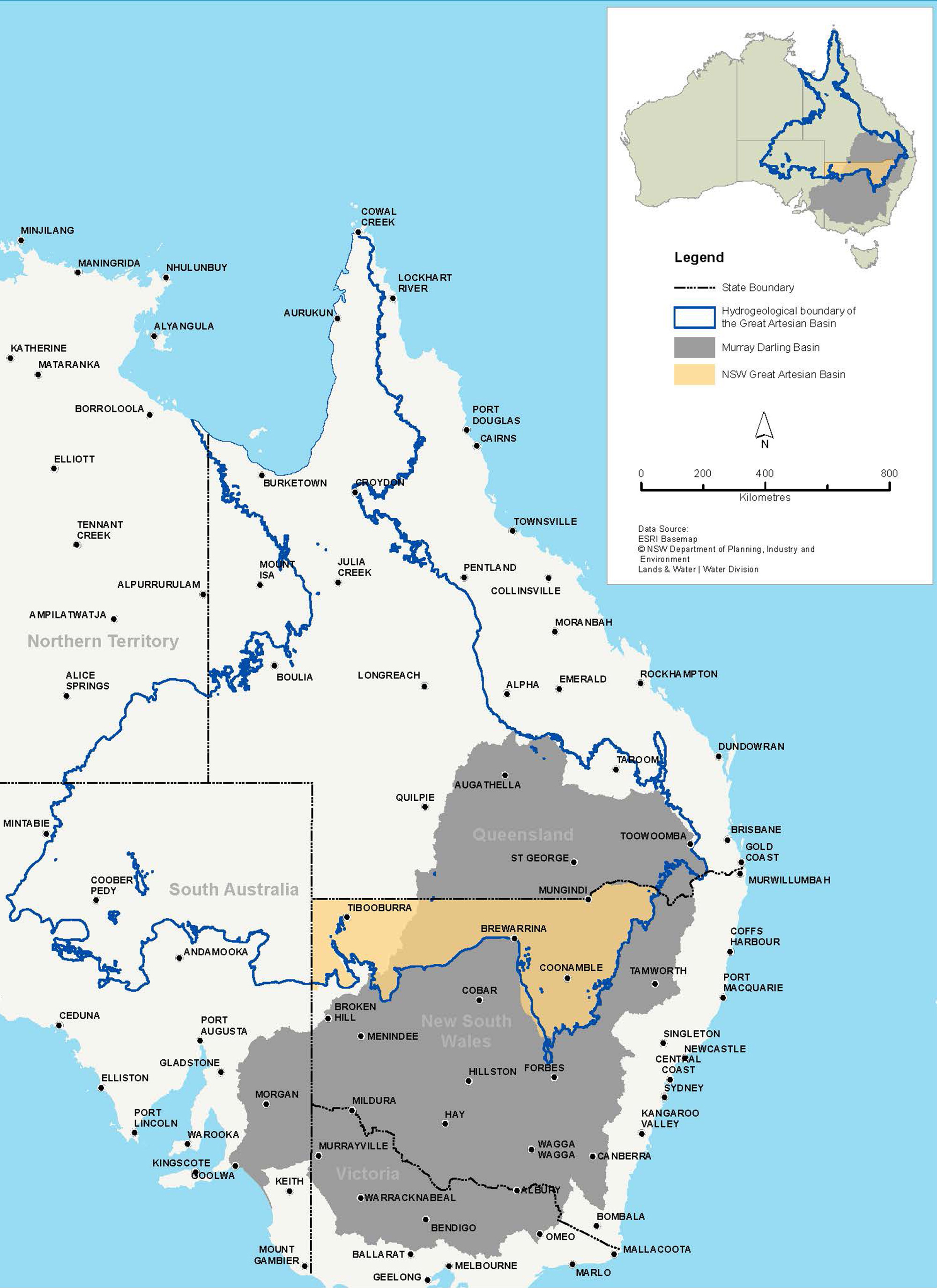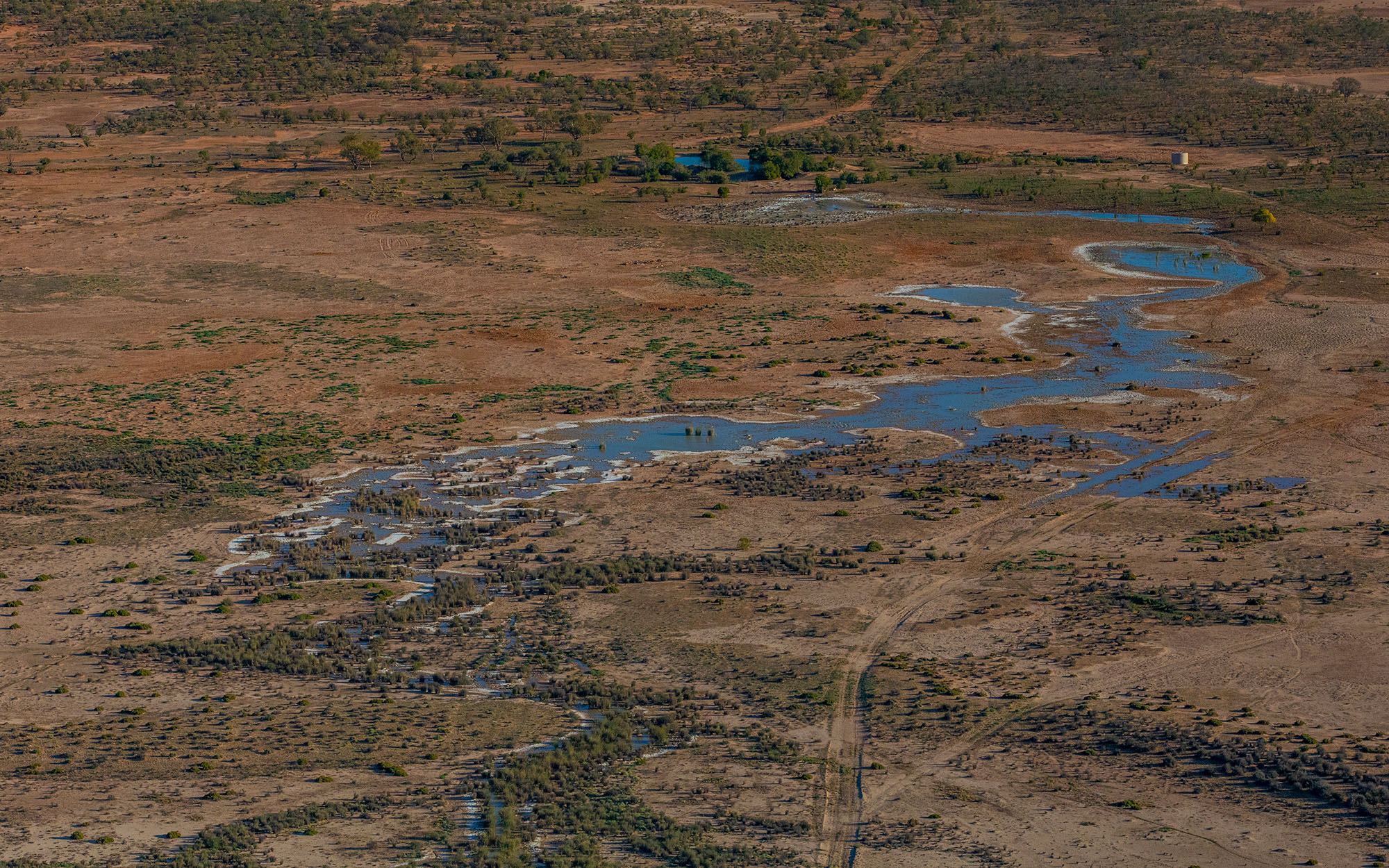About the Great Artesian Basin
The Great Artesian Basin (the GAB) is one of the largest and deepest underground freshwater resources in the world. It lies below 22% of Australia, extending into Queensland, South Australia, NSW and Northern Territory. Nearly 25% of NSW is covered by the GAB.
Great Artesian Basin Strategic Management Plan
The Great Artesian Basin Strategic Management Plan 2019 was developed by the Australian, state and territory governments in consultation with the Great Artesian Basin Coordinating Committee (representing communities, landholders, water users and the various industries operating in the GAB).
It is based on management principles, reflects the values of the stakeholders and communities and includes seven guiding principles for managing the GAB to achieve economic, environmental, cultural and social outcomes.
It is being implemented over a 15 year period until to 2034.
Read the GAB Strategic Management PlanGreat Artesian Basin Water plans
Great Artesian Basin projects
Improving Great Artesian Basin Drought Resilience Program
The Improving Great Artesian Basin Drought Resilience program aims to improve water security and drought resilience for eligible landholders across the Great Artesian Basin (GAB) in NSW by replacing or upgrading uncontrolled flowing and aging artesian bores with new bores and water reticulation systems.
Map of the Great Artesian Basin

Past projects
Cap and pipe the bores
There are 8,000 bores tapping the Great Artesian Basin across NSW. Nearly half the bores have stopped flowing, reducing landholder access to water.
The NSW Government partnered with landholders across western NSW through the Cap and Pipe the Bores Project to rehabilitate the Great Artesian Basin. This project gave landholders financial incentives to replace failing artesian bores and bore drains with new bores and efficient reliable water supply systems.
Achievements
In the past, up to 95 per cent of artesian water was being wasted through evaporation and seepage from bore drains. The Cap and Pipe the Bores program has improved the management of the GAB by:
- saving 80,000 ML of water every year
- suppling approximately 4.2 million ha with permanent, reliable, efficient and strategically located watering points
- controlled 400 free flowing bores
- removed over 10,000 km of bore drains
installed 18,000 km of piping.
Benefits
A reliable, secure water supply significantly reduces the impact of drought and aids in the preparation of a changing climate. The Cap and Pipe the Bores program has succeeded in assisting landholders with:
- clean water for better stock production and domestic use
- secure water supply on properties assisting in drought resilience
- strategically located watering points in the landscape
- assisted land managers to achieve more sustainable property and stock management
- feral animal control.
Increases in artesian bore pressure are being observed in many areas across the GAB because of capping and piping. The program is achieving many other benefits such as:
- increasing artesian pressure
- increasing access to water
- reducing salt discharge by 80,000 tonnes every year
- reducing greenhouse gas emissions by 41,600 tonnes every year
- improving biodiversity conservation.
